Nursing Simulation Lab: What It Is and Why It Matters
Each blog post is dated and contains accurate information as of that date. Certain information may have changed since the blog post publication date. If you would like to confirm the current accuracy of blog information, please visit our ABSN overview page or contact admissions at (844) 347-2503.
Simulation in nursing education allows nursing students to practice working through realistic patient care scenarios in a no-risk learning environment. During each nursing simulation lab, you’ll have a pre-briefing, followed by the patient care scenario itself, and conclude with the debriefing session.
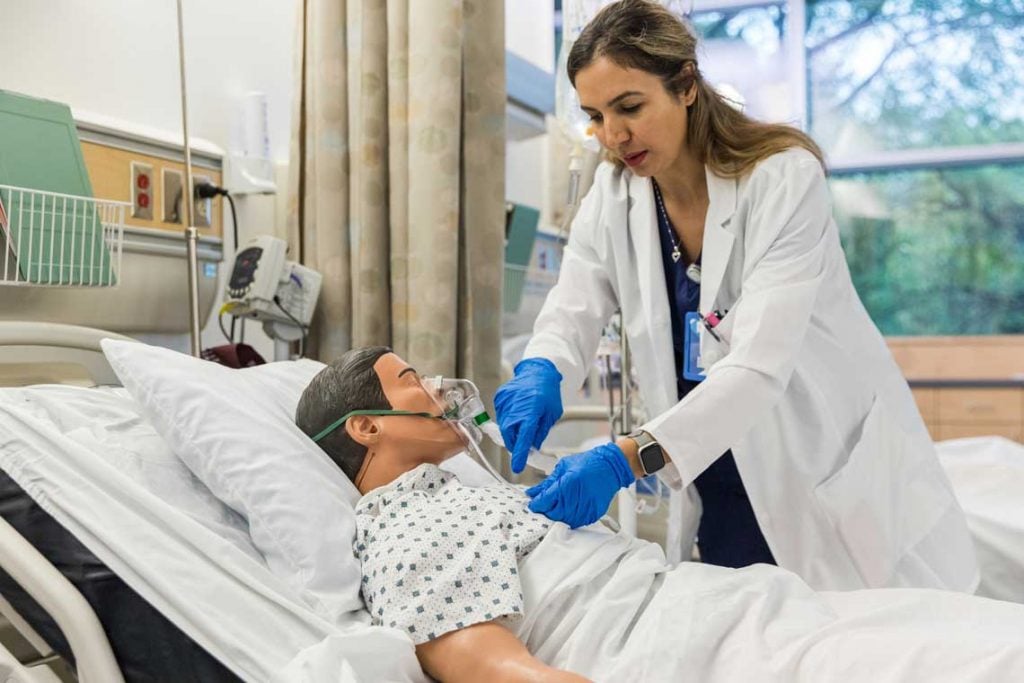
Nursing school is your pathway toward a meaningful career you can be proud of. The nursing school curriculum will teach you invaluable skills, from assessing a patient to becoming an inspiring leader within your healthcare organization. You'll graduate fully prepared to sit for the National Council Licensure Examination (NCLEX-RN) before pursuing your first registered nurse (RN) job.
Of course, nursing school requires hard work and long hours of study. The curriculum includes both coursework and hands-on experiential learning, such as nursing simulation lab ("sim lab") experiences.
At the University of Mount Saint Vincent, students enrolled in our Accelerated Bachelor of Science in Nursing (ABSN) program participate in nursing simulation labs as soon as the first semester. This ensures our ABSN students start developing their clinical judgment and skills early in their education as they work toward earning a Bachelor of Science (BS) in Nursing.
Let's take a closer look at the role of simulation in nursing education and what you can expect from the experience.
What Is Clinical Simulation in Nursing?
A simulation in nursing school is a realistic yet "simulated" patient care scenario that allows you to practice assessing a "patient," making clinical judgments, and using clinical skills to provide direct care to the "patient."
The "patient" is a high-tech medical manikin—a dummy—outfitted with technology that allows it to simulate actual patient responses, like a heartbeat. Some medical manikins can even "talk" to nursing students as they work. The voice comes from the nursing instructor behind a window in the next room.
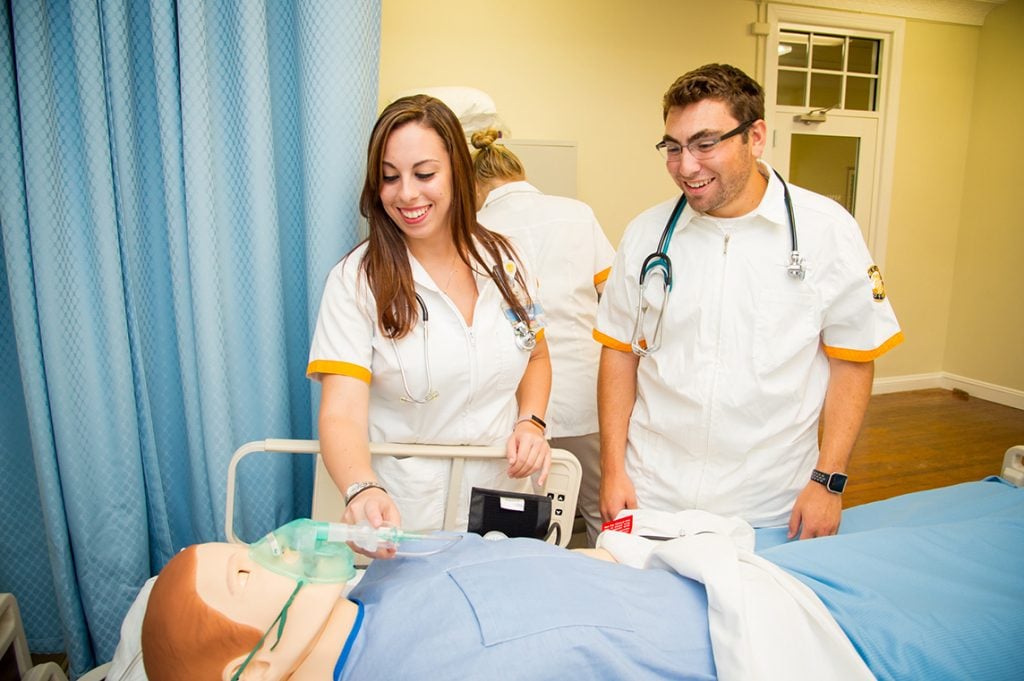
How Does a Nursing Simulation Lab Fit into the Curriculum?
The nursing school curriculum comprises a blend of methodologies. First, you work through nursing coursework, similar to the typical student experience in a non-nursing college program. In other words, you'll have lectures and classroom discussions, complete assignments, and take exams.
The other component of the nursing school curriculum is experiential learning, which includes nursing sim labs and clinical rotations. This nursing labs component allows students to develop clinical skills, fine-tune decision-making, and practice applying appropriate nursing responses to clinical care situations in a safe setting without risk to real patients.
Students then enter clinical rotations, where they apply the knowledge and skills gained from coursework and simulation labs to real-world patient care under the careful guidance and supervision of nursing professionals.
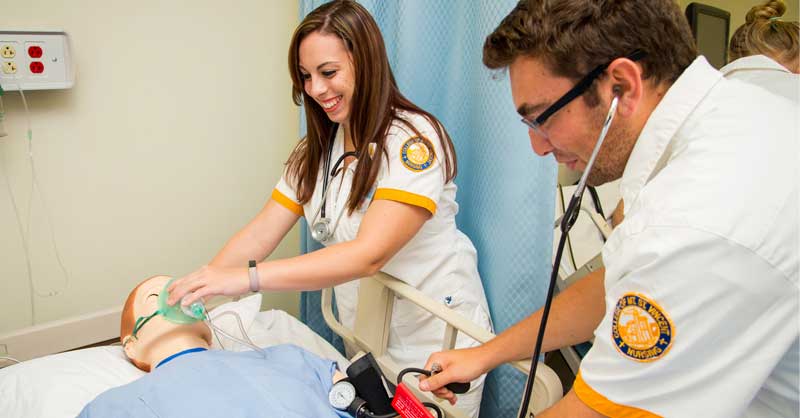
How does an accelerated nursing program work, exactly? Read more to determine whether an ABSN is right for you.
Simulation Lab vs. Skills Lab
There are two types of labs in nursing school: nursing skills labs and nursing simulation labs. In skills labs, you'll work on acquiring clinical skills, such as inserting an intravenous (IV) line and providing wound care. In a sim lab, you'll be given a patient care scenario to work through using a medical manikin.
Both labs are essential in nursing education, so it's important to arrive prepared and ready to learn.
The Importance of Simulation in Nursing Education
Clinical simulation in nursing school is crucial for learning how to become a nurse because it allows you to meet the following objectives:
- Reinforce the nursing knowledge you learned in the coursework.
- Apply the clinical skills you developed in skills labs.
- Practice assessing patients, making evidence-based decisions, and handling problem-solving in patient care situations.
It may interest you to know that the NCLEX is designed to test your decision-making more than your ability to memorize nursing concepts. In other words, to pass the licensure exam, you must identify the most appropriate, evidence-based nursing responses to patient care scenarios—precisely what you'll be practicing in sim labs.
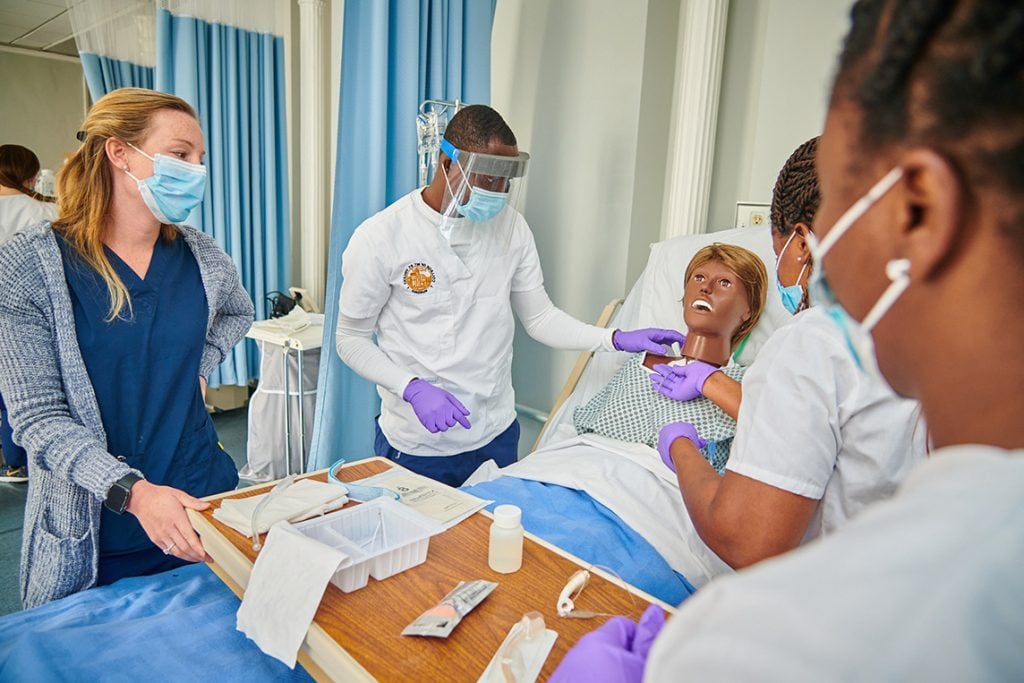
What to Expect in Nursing Simulation Labs
There are plenty of "firsts" for nursing students, and they can be as exciting as they are stressful. The first time you arrive at a nursing simulation, you may be worried about making a mistake.
However, mistakes in simulation labs are a good thing. Simulation labs are controlled environments with manikins for patients, so you can learn from your mistakes without the fear of causing harm.
In these labs, your first job is to figure out how to apply your nursing knowledge to patient care scenarios, choosing the most appropriate nursing responses based on your observations. Your second job is to learn from what you do right and wrong. To get the most out of the experience, you should also learn from what other nursing students do in their patient care scenarios.
Follow these 10 nursing school study tips to support your success as a nursing student.

Preparation for Each Lab
Nursing students should arrive fully prepared for each sim lab to enhance the learning experience. If you're nervous about experiential, hands-on learning, it's particularly important to be well-prepared so you can feel confident.
The first step in preparing is to ensure you're current on all nursing coursework and assigned readings. Review the materials and your notes thoroughly, even if you're already familiar with the conditions covered by the upcoming lab. Spend extra time reviewing the coursework so the information is fresh.
The next step occurs when you arrive at the ABSN learning site and participate in a pre-briefing. Each nursing sim lab is different but follows the same three-stage process. At the start of each lab, the instructor divides you and your peers into groups of roughly a handful of students each.
Each group is given a pre-briefing, which consists of the patient's background information (including medical history) and sometimes an overview of your evaluation criteria. The pre-briefing may mimic a shift handover by using the language nurses will use to update you as you take over their patients.
It's essential to pay close attention during the pre-briefing. Take notes as needed to ensure that you'll remember your patient's medical history and the symptoms.
Assessing and Responding to Clinical Situations
The second stage of a nursing sim lab is the clinical simulation. The simulation begins as your group enters and encounters a medical manikin that can mimic an actual patient's responses and physiological processes.
Depending on the manikin model, it may have reactive pupils, heart sounds, bowel sounds, breath sounds, and a pulse. You can provide direct care to the manikin by inserting an IV line or catheter, giving medications, or decompressing the stomach with a nasogastric (NG) tube.
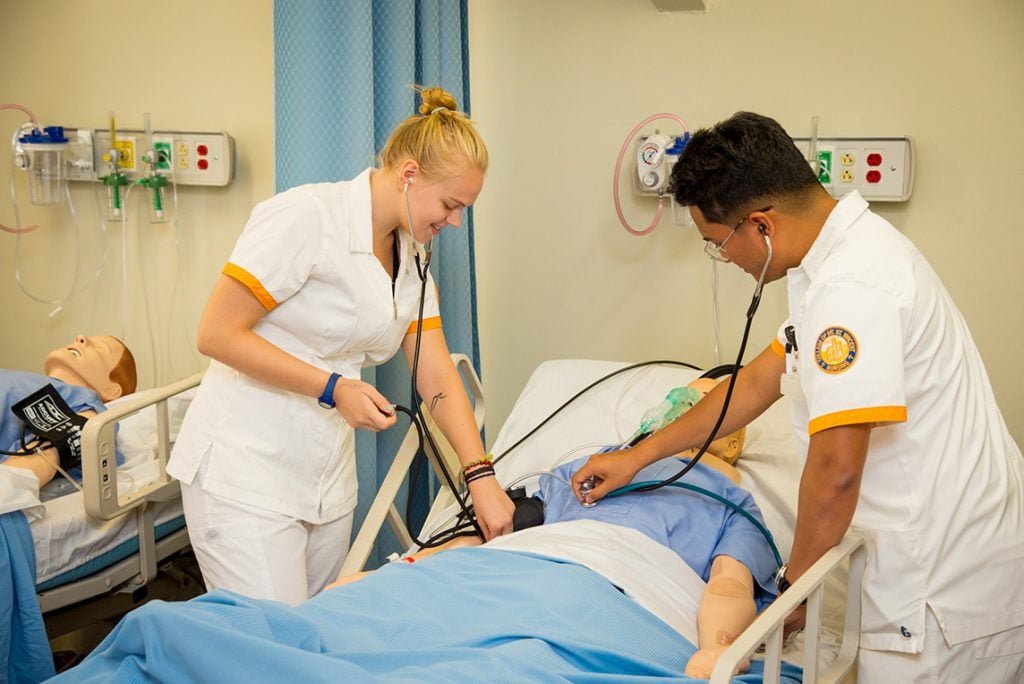
Although the manikin is not real, it's important to act as if it were. This is an opportunity to develop a good bedside manner, clinical skills, and nursing judgment. When you walk into the room, greet the patient by name. As you work through the scenario, continue to talk to the patient as appropriate.
In each scenario, the patient's condition will begin to deteriorate. To keep your patient alive and in good health, you'll have to figure out what's happening to the patient and how to respond.
Sim labs can be chaotic, particularly because you'll work through the scenario with a handful of other students. Take a breath and remind yourself of the nursing process you learned in your coursework. The nursing process is as follows:
- Assess the patient. Don't be afraid to take charge of the situation by delegating patient assessment tasks to other students while performing your own. Gather as much information as you can during this step.
- Diagnose the problem. Consider the patient's background information, medical history, and your observations from the patient assessment to identify the problem.
- Plan the response. Figure out what is needed to achieve the patient's health goals.
- Implement the plan. In some situations, you'll be forced to develop the plan as you implement it. For instance, if your patient can't breathe, there isn't time to stand around talking about the fact that the patient needs oxygen; instead, you must immediately perform that intervention.
- Evaluate the patient. After providing the most appropriate care responses to the patient based on the situation, re-evaluate the patient to determine if they are improving or if further intervention is warranted.
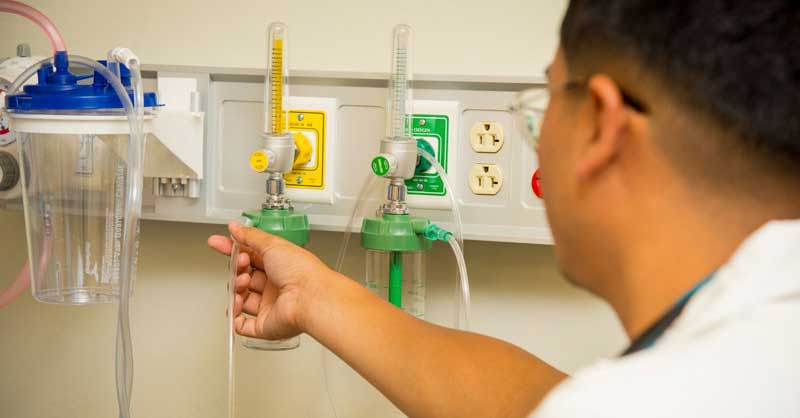
Nursing school also involves clinical rotations. Learn what to expect in nursing clinicals here.
Debriefing Session with Your Nursing Instructor
The final stage of a nursing simulation is the debriefing session. There will be a debriefing session after every lab, regardless of whether your patient recovered. After the rush of adrenaline you may get when faced with an urgent patient care scenario, it might be tempting to let down your guard and let your attention wander during the debriefing session. However, this phase of the sim lab is just as important as any other—if not more so.
You and your cohort will watch the recording of the simulated scenario while the instructor breaks it down. You'll learn what you did right, what you did wrong, and how you can improve your nursing skills and decision-making moving forward. Take plenty of notes and review them afterward to refresh your memory.
Your Journey into Nursing Starts Here
When you attend the ABSN program at the University of Mount Saint Vincent, you’ll benefit from our fully equipped, high-tech nursing simulation labs. You will work through highly realistic patient care scenarios under the guidance of esteemed instructors who are genuinely passionate about supporting the success of each student.
Mount Saint Vincent has a long-established history of empowering our nursing students with the tools to successfully provide evidence-based, compassionate care to patients and be collaborative leaders in their healthcare organizations. Enjoy high-quality nursing education in the heart of New York City, with clinical placements in nationally renowned healthcare facilities and onsite courses that offer collaboration and personalized attention.
Ready to leverage your past college education to earn your BS in Nursing in as few as 16 months? Contact one of our admission counselors today to discuss eligibility and the next steps.
